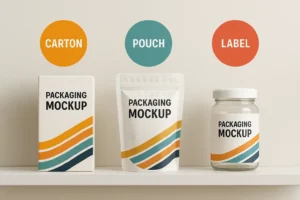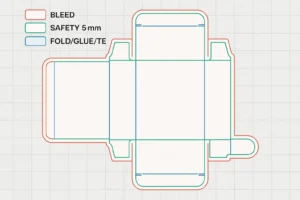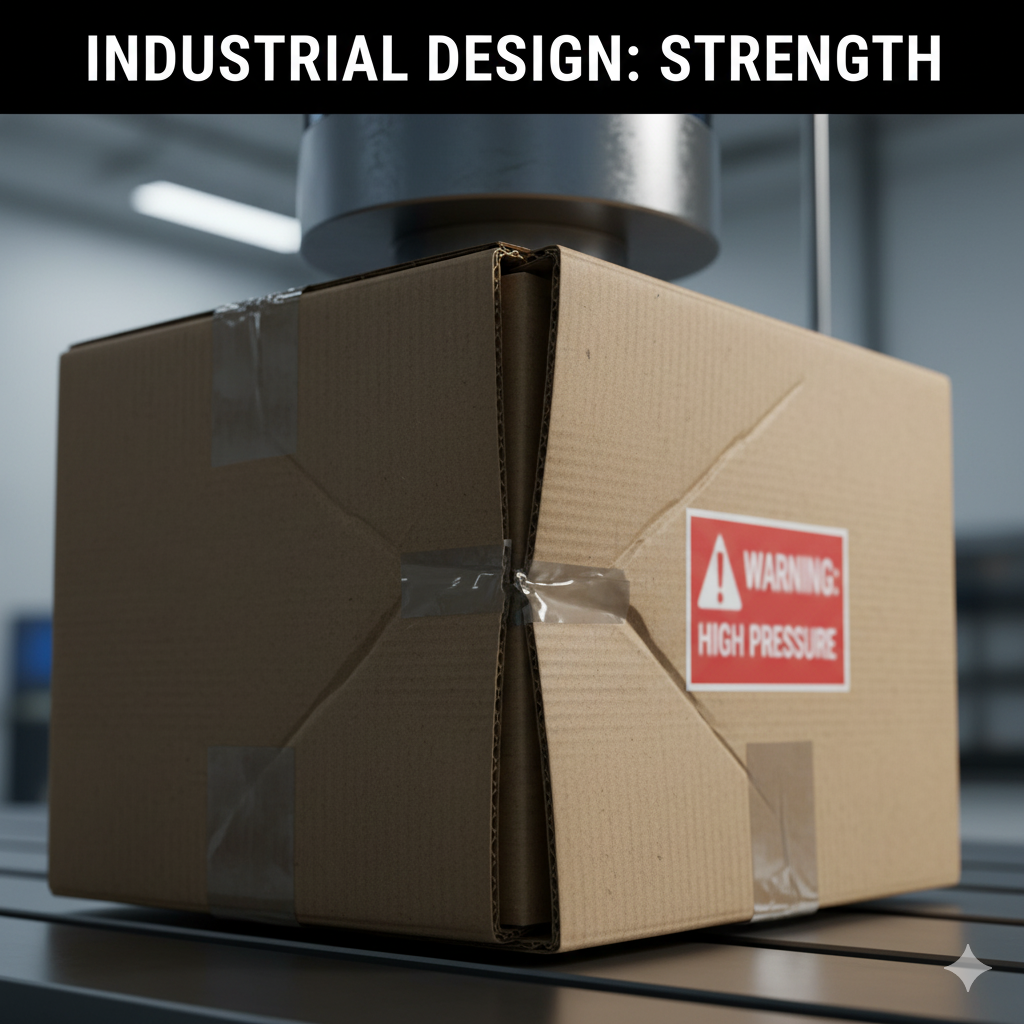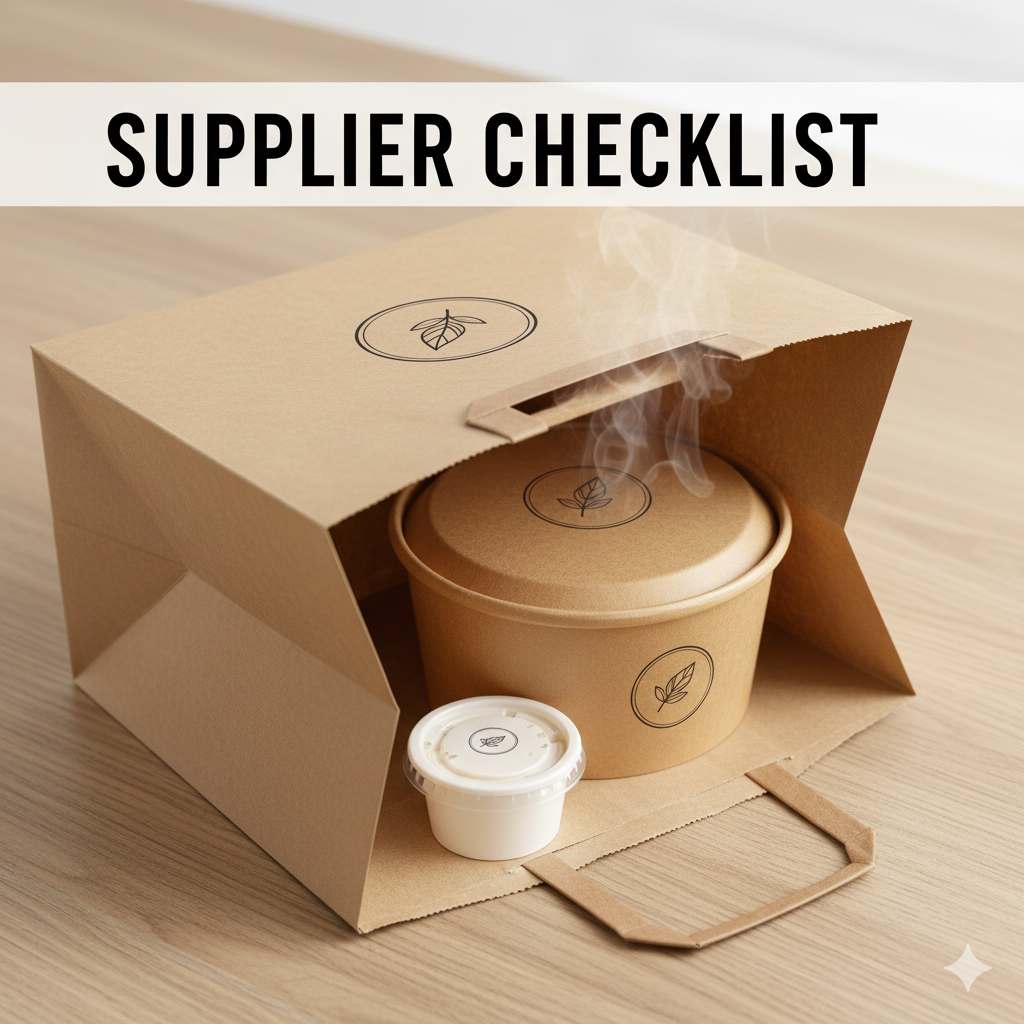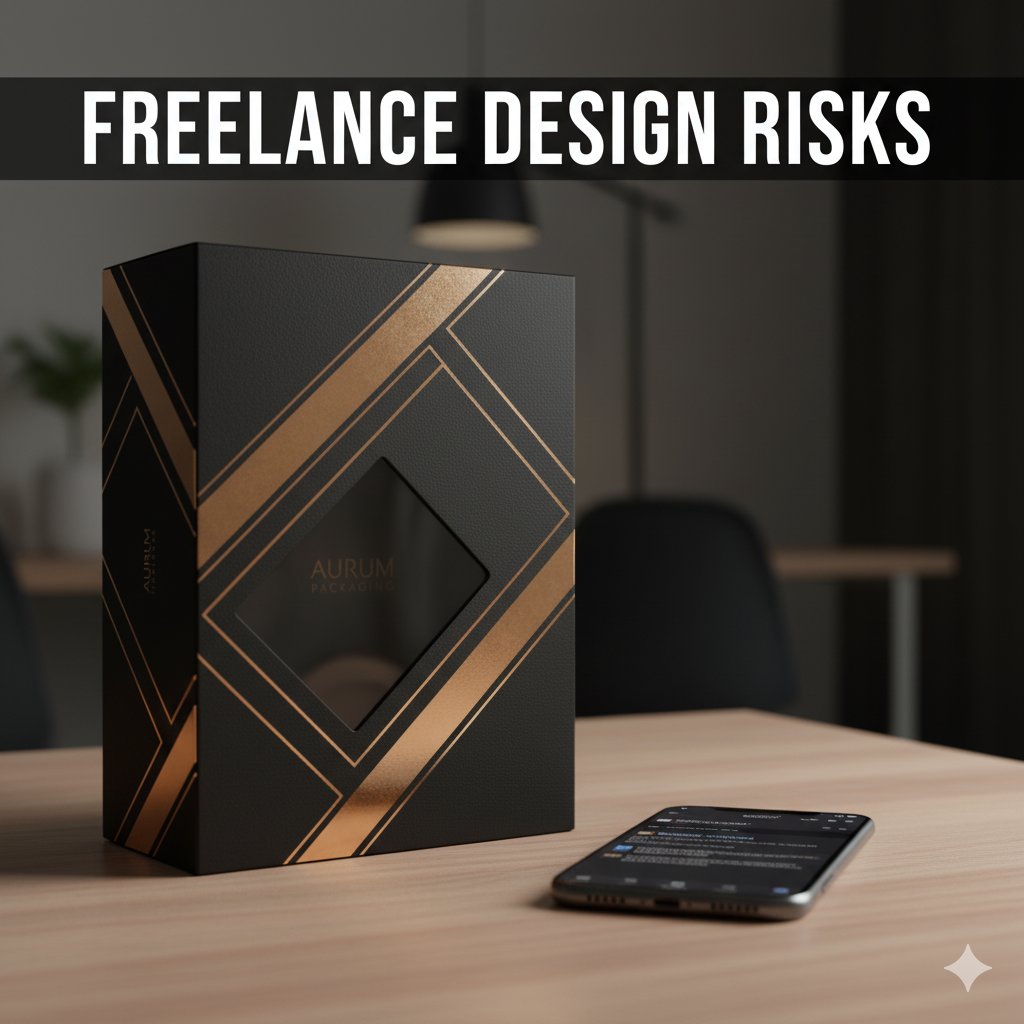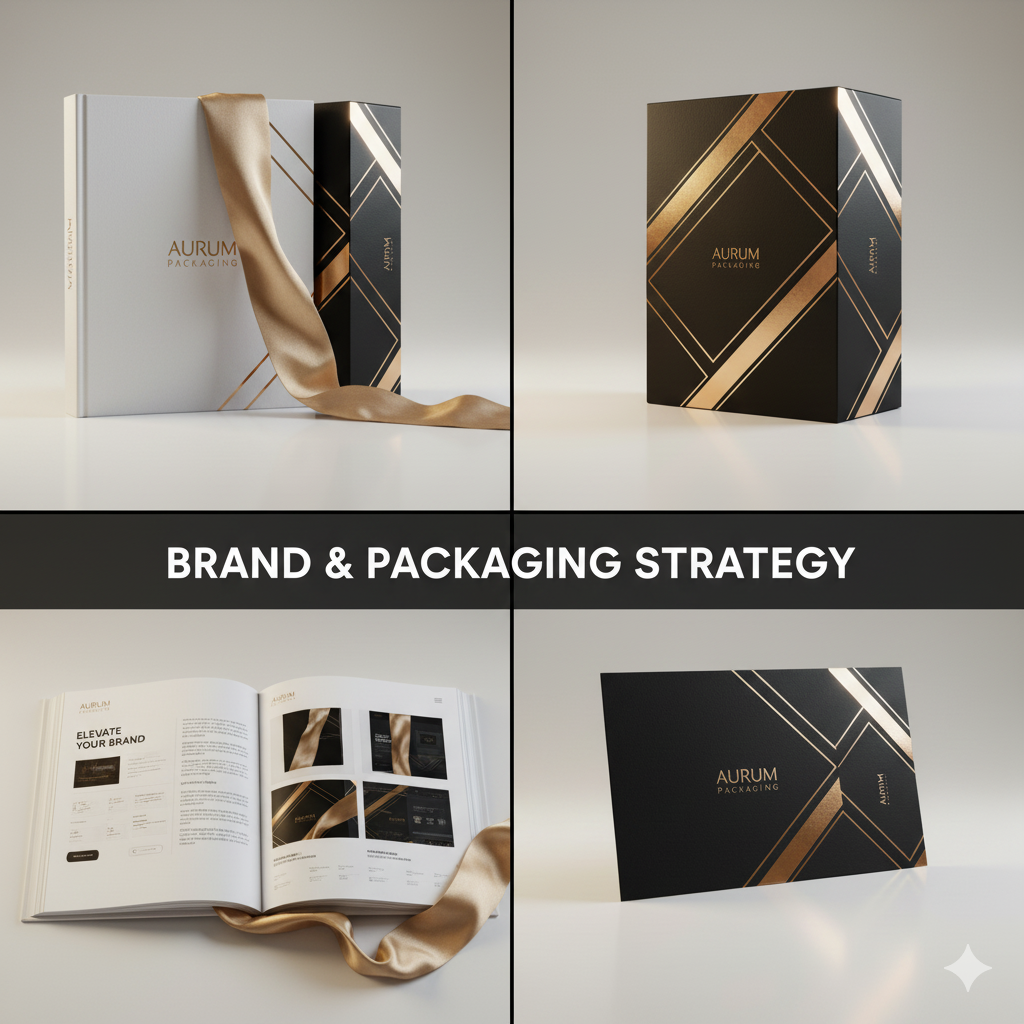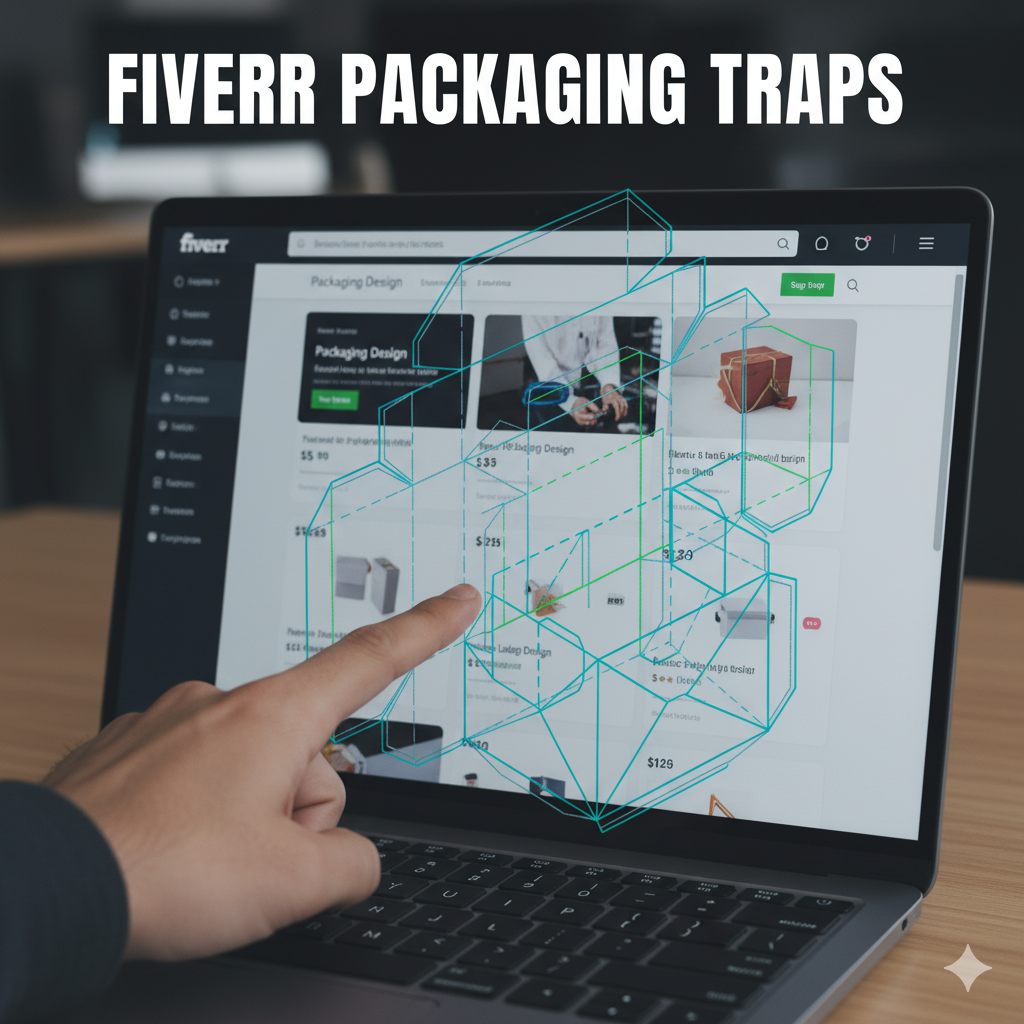Retail Packaging Design Companies
Table of Contents
-
Industry Context: Why 2025 raised the bar
-
Services & Features you should expect
-
Scorecard: 12 evaluation points (use before hiring)
-
Process: Strategy → Dieline → Prepress → Print
-
Visual System & Hierarchy that sells
-
Compliance & Risk Controls (non-legal)
-
Print Methods & Finishes for retail
-
E-commerce Readiness (thumbnail → PDP → unboxing)
-
Sustainability (real impact, not greenwashing)
-
Common Mistakes & Quick Fixes
-
Files, Color & Prepress (what printers need)
-
Timelines, MOQs & Cost Levers
-
Hire CTA + Portfolio Links
Industry Context: Why 2025 raised the bar
-
Omnichannel reality: Your pack must be legible at 120–160 px and persuasive at arm’s length. Thumbnail-first typography is no longer optional.
-
Retailer compliance: GS1 barcodes, shelf-ready packaging (SRP), and clear pallet labels—fail here and listings slip.
-
Color governance: Multi-plant printing demands Pantone + LAB targets and ΔE ≤ 2.0 tolerance to avoid variant drift.
-
Rapid varianting: Seasonal SKUs and collabs need master templates, shared dies, and a modular asset library.
-
Sustainability pressure: Retailers prefer mono-material solutions, credible recycled % claims, and honest disposal guidance.
Services & Features you should expect
-
Brand & pack architecture: naming hierarchy, type scales, color system, iconography.
-
Structural design & CAD: cartons, sleeves, labels, pouches, tubes, SRP trays, shippers; bleed ≥ 3 mm, safety 3–5 mm.
-
Prepress governance: trapping 0.08–0.12 mm, overprint/knockout maps, rich black policy, total ink limits.
-
Color management: Pantone master chips, LAB references, CMYK simulations, press-OK with ΔE reporting.
-
Retail readiness: barcode magnification & quiet zones ≥ 2.5 mm, SRP tear paths, peg holes, anti-theft window planning.
-
Photography & 3D: PDP hero sets, macro finish shots, true-to-print color.
-
Sustainability roadmaps: mono-material redesigns, caliper right-weighting, water-based coatings, disposal iconography by region.
-
Vendor enablement: RFQs, spec sheets, QC checklists, pallet patterns, change-control logs.
Scorecard: 12 evaluation points (use before hiring)
-
Hierarchy that sells: brand → product → variant/strength → key RTB → net contents.
-
Thumbnail legibility: variant readable at 120–160 px on neutral background.
-
Barcode discipline: EAN/UPC graded A/B, quiet zone ≥ 2.5 mm, off folds and heavy varnish.
-
Bleed/safety: ≥ 3 mm bleed; 3–5 mm safety; small type clear of creases/vents.
-
Trapping & overprint: 0.08–0.12 mm; micro-type (≤8 pt) forced knockout.
-
Color control: Pantone + LAB; ΔE ≤ 2.0 vs master across plants.
-
Material fitness: board/film selected for scuff, crush, MVTR/OTR needs.
-
Finish discipline: foil/spot gloss away from warnings/codes; coating weight specced.
-
SRP/peg-readiness: tear lines tested; hang tabs reinforced; front still merchandises post-open.
-
Sustainability honesty: claims with recycled %, certifications, and disposal guidance by region.
-
Change control: versioning on artboard and file names; rev logs shared with suppliers.
-
Dual-sourcing: at least two approved printers matched to the same spec and color bible.
Process: Strategy → Dieline → Prepress → Print
-
Strategy & brief
Define audiences, channels (grocery, pharmacy, DTC), volumes, and shelf competitors. Run “thumb tests” early. -
Content matrix
Lock exact copy order for claims, ingredients/actives, nutrition, warnings, certifications, batch/expiry and variable-data fields. -
Master visual system
12-column grid, type ramp (H1/H2/body/captions), icon family (dose, recycle, QR, CR), color logic by variant—never color-only. -
CAD & mechanics
Build dielines with 3 mm bleed / 5 mm safety, fold/glue/TE layers, SRP tear paths, peg holes, window options. Add barcode/QR zones. -
Prototypes & tests
White dummies + printed comps; carton fit on line, scuff tests, drop/stack for SRP, retail peghook trial. -
Prepress
-
Images 300 ppi @100%; line art 1200 ppi.
-
Trapping 0.08–0.12 mm; rich black only for large fills (e.g., C60 M40 Y40 K100), never for micro-type.
-
Overprint only where intended; verify in Overprint Preview.
-
Barcodes at spec magnification; quiet zone ≥ 2.5 mm; sample scans included.
-
-
Color sign-off
Wet proofs with LAB targets; reject above ΔE 2.0. Document CMYK simulations if no spot ink. -
Press & QC
Record ΔE, barcode grades, coating weights; photograph press OK samples; verify SRP tear path after packing. -
Handover kit
Final PDFs (PDF/X-1a or X-4), source files, color bible, preflight report, pallet patterns, revision log.
Visual System & Hierarchy that sells
-
Top band: brand mark + product family.
-
Primary signals: variant/strength badge large; one decisive RTB (1–3 words).
-
Secondary: certifications (e.g., halal/vegan), sustainability icons, usage pictograms.
-
Tertiary: nutrition/actives, ingredients, legal line, batch/expiry windows.
-
Color & contrast: contrast ≥ 4.5:1 for small copy; pair color with pattern, letter, or numeral to avoid confusion.
-
Micro layout: keep codes 6–8 mm from edges/folds; align baselines across panels for premium consistency.
Compliance & Risk Controls (non-legal)
-
Maintain a controlled master copy with versioning; export per market if requirements differ.
-
Do not rely on color alone for strengths/variants—add pattern or alphanumeric.
-
Reserve UID/serialization areas on labels/cartons even if not used at launch.
-
Place tamper cues (arrows, “Lift to open”) when TE features exist.
-
Print disposal guidance relevant to key regions; link a QR micro-site for updates.
(Guidance only—confirm with your regulatory team.)
Print Methods & Finishes for retail
-
Litho offset for cartons/inserts—crisp micro-type, accurate color.
-
Flexo for labels and corrugate—plate counts affect cost; manage dot gain.
-
Digital (Indigo/inkjet) for pilots, low MOQs, and variable data.
-
Finishes: aqueous matte/satin (retail-friendly), soft-touch sparingly (scuff visibility), spot gloss outside barcodes/warnings, cold foil or metallic inks for accents, emboss/deboss aligned with grain.
-
Security (as needed): microtext, UV inks, guilloché, tamper labels; keep functional and tasteful.
E-commerce Readiness (thumbnail → PDP → unboxing)
-
Thumbnail: variant readable at 120–160 px; clean background; avoid micro-claims.
-
PDP gallery (6–8 images): hero, side panel info table, macro of finish, barcode/QR with highlighted quiet zone, inside-lid/leaflet view, size in hand, SRP or pallet shot.
-
Downloads: AI/PDF dielines, prepress checklist, color bible, disposal guide PDF.
-
Unboxing: step-by-step TE removal or assembly; QR video if needed.
-
Color honesty: renders match real print within ΔE tolerance—no oversaturation.
Sustainability (real impact, not greenwashing)
-
Right-weighting: reduce caliper where compression allows; publish gram savings.
-
Mono-material structures: paper tray or molded fiber instead of mixed laminations where feasible.
-
Coatings: water-based over plastic laminations unless barrier is essential.
-
Design for disassembly: avoid glued mixed materials; use clear disposal icons + QR for regional instructions.
-
Claim discipline: printed recycled % and certifications only—seedha, no vague “eco” lines.
Common Mistakes & Quick Fixes
-
Artwork misfit on machinery → Add chamfers; verify tuck/flap lengths; confirm glue areas.
-
Barcode fails at DC → Move off seam; increase contrast; quiet zone ≥ 2.5 mm; re-grade to A/B.
-
Overprint on fine text → Force knockout for ≤8 pt; audit Overprint Preview.
-
Color drift across plants → Single color bible; press OK at each facility; ΔE ≤ 2.0.
-
SRP tears ugly → Re-spec perf ratio; add start notch; test at packing speed.
-
Scuffy soft-touch → Switch to satin/eggshell or raise coating weight; add slip sheets.
Files, Color & Prepress (what printers need)
-
Finals: PDF/X-1a or X-4; fonts outlined; profiles embedded; source files archived.
-
Layering (named, non-printing): dieline, fold, glue, varnish, foil, emboss, white ink, security, barcode/QR zones, overprint/knockout legend.
-
Bleed ≥ 3 mm; safety 3–5 mm; keep micro-type away from creases/vents.
-
Images 300 ppi @100%; line art 1200 ppi; total ink limit per press profile.
-
Pantone governance: book + LAB; ΔE ≤ 2.0; rich black recipe for solids (not micro-type).
-
Barcodes/QR: magnification, height, placement spec; quiet zone ≥ 2.5 mm; sample scan report attached.
-
Preflight report: color spaces, overprints, fonts, resolution, trim/bleed boxes.
Timelines, MOQs & Cost Levers
-
Strategy + system: 1–2 weeks
-
CAD + comps: 5–7 days
-
Prepress + proofs: 3–5 days
-
Printing: digital 3–5 days; offset/flexo 10–14 days incl. drying & QC
-
MOQs: digital 100–500; offset 5k–20k; flexo labels 5k+
-
Levers: shared dies, standardized calipers, fewer spot colors, gang runs, localize artwork (not structure), dual-source printers.
Hire CTA + Portfolio Links
Shortlist retail packaging design companies that ship press-ready files, not pretty headaches. We build master systems, enforce color, and enable multi-plant printing—jaldi, without drama.
-
Supplements & label systems (regulated hierarchy discipline):
https://usmandesigner.com/portfolio/supplement-label-design-freelancer/ -
High-fidelity consumer packs & 3D visuals:
https://usmandesigner.com/portfolio/vape-packaging-design-store/ -
Premium cartons & complex dielines:
https://usmandesigner.com/portfolio/sushi-packaging-design/FAQs
1) What separates top retail packaging design companies from general agencies?
Structural CAD depth, prepress discipline (bleeds, trapping, knockout), Pantone/LAB control with ΔE reporting, and vendor-agnostic specs ready for multiple plants.2) How do I keep color consistent across printers?
Use a single color bible, sign wet proofs, and enforce ΔE ≤ 2.0 with documented LAB targets at each plant.3) Why do barcodes fail at retailers/DCs?
Missing quiet zones, low contrast, wrong magnification, or folds under the code. Grade to ANSI A/B pre-press.4) What size bleed/safety should I use?
≥ 3 mm bleed on all sides and 3–5 mm safety; keep small text and codes away from creases and vents.5) Can sustainability claims go on pack?
Yes—only if provable (recycled %, certifications). Add disposal guidance by region via QR.6) When should I choose digital vs offset/flexo?
Digital for pilots/low MOQs/variable data; offset for premium cartons; flexo for labels/corrugate at volume.7) How do I ensure SRP opens cleanly on shelf?
Tune perf ratio, add start notch, test with actual product weight and retail staff.
